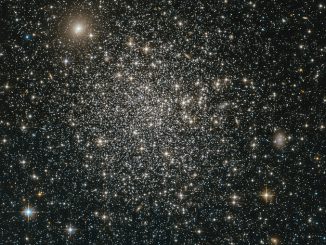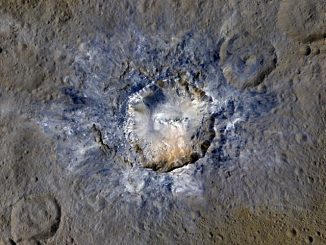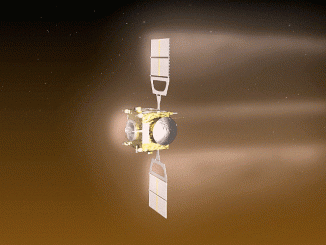
Hubble sees a glittering sphere of stars in the Small Magellanic Cloud
This NASA/ESA Hubble Space Telescope image reveals the simple beauty of NGC 339, a 6.5-billion-year-old massive intermediate age star cluster that lies in the SMC, a dwarf galaxy some 200,000 light-years away from us. The relationship between such clusters and true globular clusters is not yet fully understood.









